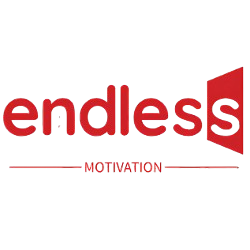In the quiet, private theater of our own minds, the script is constantly being written. The dialogue that plays on a loop—in moments of stress, decision, doubt, or triumph—shapes the very fabric of our reality. This internal narrative is the author of our confidence, the architect of our anxiety, and the compass of our choices.
For many, this script is a chaotic, unedited mess of past criticisms, societal expectations, and fearful projections. The challenge of personal growth, then, is to become the editor of this internal monologue. But how does one begin to rewrite a lifetime of conditioning? The answer is deceptively simple: start small. Start with just three words.
The three-word quote, often dismissed as a cliché or a mere bumper sticker affirmation, is in fact a precision tool for cognitive restructuring. It is a scalpel for the soul, capable of cutting through the noise and delivering a concentrated dose of perspective, courage, and clarity. This is not about positive thinking; it’s about precision thinking. It’s about installing a new, more empowering command into the operating system of your mind.
In this exploration, we will move beyond simple inspiration. We will deconstruct the unique neurological power of the three-word phrase, provide a practical toolkit for its application, and reveal how these tiny linguistic triads can serve as the foundational pillars for a life remade.
Part 1: The Neurological Alchemy – Why Three Words Stick
The power of the three-word quote is not mystical; it is rooted in the fundamental wiring of the human brain. Understanding this wiring is the first step to wielding these phrases with intention.
1. The Cognitive Sweet Spot: Chunking and Memory
Cognitive psychology has a concept known as “chunking,” where the brain groups individual pieces of information into larger, more manageable units. A phone number is chunked into segments (555-867-5309) for this exact reason. Three words represent the ideal cognitive chunk for a complex idea. It’s large enough to carry significant meaning but small enough to be held effortlessly in working memory. “Embrace the struggle” is a chunk. “Find a way to appreciate the challenges you are facing” is a sentence you will likely forget by the end of this paragraph.
2. The Rhythm of Recall: The Rule of Three
As a timeless principle in writing and speech, the Rule of Three states that concepts or ideas presented in threes are inherently more memorable, persuasive, and satisfying. Think “Blood, sweat, and tears,” “The good, the bad, and the ugly,” or “Stop, look, and listen.” This triad creates a beginning, middle, and end, forming a complete pattern that the brain recognizes and retains. A three-word quote is a self-contained, rhythmic unit that sticks like a burr in the fabric of your consciousness.
3. The Bypass of Resistance: Speaking to the Subconscious
Our conscious, critical mind is a skeptic. It analyzes, debates, and deconstructs lengthy arguments. A three-word quote, however, often slips past this gatekeeper. Its brevity gives the conscious mind little to grab onto, allowing it to travel directly to the deeper, more impressionable subconscious. A phrase like “Trust your gut” doesn’t require a philosophical debate on intuition; it lands as a felt sense, an instruction. This bypass is where real behavioral change begins.
4. The Anchor in the Storm: Cognitive Ease in Stress
When we are stressed, anxious, or overwhelmed, our cognitive resources are depleted. This is when we default to our most ingrained, often least helpful, patterns of thinking. A well-practiced three-word quote offers a lifeline of “cognitive ease.” It is a simple, pre-programmed command that requires no energy to recall. In a moment of panic, “Breathe. It’s okay” is accessible. A paragraph on diaphragmatic breathing is not.
Part 2: The Architect’s Toolkit – A Practical Guide to Living Your Quote
Knowing why three-word quotes work is only half the battle. The transformation happens in the application. This is a practical, step-by-step guide to moving from passive admiration to active embodiment.
Phase 1: Diagnosis and Selection (The Foundation)
You cannot build a house without first assessing the land. The first step is to identify the area of your life that most requires a new narrative.
- Conduct a Life Audit: Take a quiet moment with a journal. Draw a wheel of life and label the segments: Career, Health, Relationships, Finances, Personal Growth, Spirituality, etc. Rate your satisfaction in each area on a scale of 1-10.
- Identify the Limiting Narrative: For the lowest-rated areas, ask yourself: “What is the story I tell myself about this?” You might find thoughts like:
- Career: “I’m not good enough.”
- Health: “I have no willpower.”
- Relationships: “I’m unlovable.”
- Prescribe the Antidote: Now, find the three-word quote that is the direct opposite, or the healing balm, for that limiting narrative.
- The antidote to “I’m not good enough” is “I am enough.”
- The antidote to “I have no willpower” is “Consistency over intensity.”
- The antidote to “I’m unlovable” is “I am worthy.”
Do not select a quote because it sounds profound. Select it because it feels like a slightly uncomfortable stretch—a truth you are ready to grow into, but don’t fully believe yet. This is the seed of growth.
Phase 2: Integration and Installation (The Construction)
A blueprint left in the drawer builds nothing. You must bring your chosen quote into your daily environment to install it as a new mental habit.
- Environmental Cues:
- Physical: Write it on a sticky note on your bathroom mirror, your computer monitor, or your refrigerator.
- Digital: Set it as the lock screen on your phone. Use a widget on your home screen that displays the quote.
- Auditory: Record yourself saying the phrase with conviction and set it as a recurring alarm or notification on your phone.
- The Mantra Loop: This is the active practice of rewriting the neural pathway.
- Morning Intention: Before you check your phone or get out of bed, take three deep breaths and repeat your phrase 10 times. Feel its meaning, don’t just say the words.
- Trigger-Action Routine: Tie your quote to a specific daily trigger. Every time you wash your hands, repeat your phrase. Every time you stop at a red light, repeat your phrase.
- Evening Reflection: In your journal, answer one simple question: “Where did I live my quote today?” This isn’t for judgment, but for reinforcement. Even a small instance counts.
Phase 3: Embodiment and Evolution (The Habitation)
The final phase is when the quote moves from something you say to something you are. It becomes an unconscious competence.
- Notice the Shift: You’ll know it’s working when, in a moment of challenge, the phrase arises automatically. When you make a mistake, instead of the old narrative of “I’m so stupid,” the new thought “Progress over perfection” pops up. This is a sign of successful cognitive rewiring.
- Level Up: Once a quote feels integrated and true—once it has become your new default—it’s time to evolve. Return to your life audit and select a new area of focus. The work of growth is never finished.
- Create Your Own: The most powerful quotes are the ones you forge in the fire of your own experience. What three-word principle have you learned from your biggest failure? What three-word command does your future self need to hear? Your personal mantra, like “Protect your peace” or “Curiosity over judgment,” will always carry the most power because it is written in the language of your own soul.
Part 3: A Living Library – Three-Word Quotes for Every Aspect of Your Journey
To get you started, here is a categorized library of three-word quotes, curated not just for inspiration, but for specific, actionable application.
For Cultivating Inner Resilience:
- This too shall pass. (Use when facing overwhelming emotion or temporary hardship.)
- I am still here. (A powerful affirmation of survival and strength after a setback.)
- Stronger than yesterday. (Focus on incremental growth, not comparison to others.)
- Let it go. (The ultimate release valve for things outside your control.)
- One step enough. (For when the whole journey feels too long; focus only on the next right action.)
For Igniting Purpose and Action:
- Do the work. (The antidote to procrastination and over-planning.)
- Start where you are. (Eliminates the excuse of not having the right resources or timing.)
- Why not me? (A challenge to self-doubt and a claim to opportunity.)
- Create something today. (A push against passive consumption and toward active contribution.)
- Leave a legacy. (A reminder to think beyond the immediate and act with purpose.)
For Fostering Mindfulness and Presence:
- Be here now. (The foundational command for all mindfulness practice.)
- This is enough. (A cure for the “arrival fallacy” and a practice in gratitude for the present.)
- Breathe and release. (A simple, portable meditation technique.)
- Notice without judgment. (The core of mindfulness: observing your thoughts and feelings without being ruled by them.)
- Savor the ordinary. (An instruction to find magic in the mundane.)
For Nurturing Connection and Relationships:
- Listen to understand. (Not to reply—a radical shift in communication.)
- Assume positive intent. (Defuses conflict and prevents miscommunication.)
- Choose kindness first. (A decision to lead with compassion, even when it’s difficult.)
- Forgive to free. (Focuses on the benefit to you, not condoning the action.)
- Love is verb. (A reminder that love is demonstrated through action, not just felt as an emotion.)
For Embracing Growth and Learning:
- Curiosity over judgment. (Approach new ideas and mistakes with a learning mindset.)
- Feedback is data. (Depersonalizes criticism and turns it into useful information for growth.)
- Unlearn and relearn. (The essential skill for the 21st century.)
- Get comfortable with uncomfortable. (The only way to grow is to expand your comfort zone.)
- I don’t know yet. (Reframes ignorance from a permanent state to a temporary one.)
The Symphony of Three: A New Life Soundtrack
The journey of personal transformation can feel like trying to compose a symphony without knowing how to read music. It’s overwhelming, chaotic, and it’s easy to get lost. The three-word quote is the simple, clear note. Master one note, played with consistency and conviction, and you have the foundation for a melody. Master several, and you can begin to compose the soundtrack of a life lived on purpose.
This is the true power of the triad. “I am enough” quiets the inner critic. “Just do it” mobilizes the procrastinator. “This too shall pass” comforts the grieving. “Progress over perfection” liberates the striver.
You do not need to overhaul your entire personality in a day. You only need to choose one phrase. Just three words. Integrate them. Live them. Let them rewire the deepest grooves of your thinking. And when that phrase has become a part of you, choose another.
In the endless, complex novel of your life, let these three-word quotes be the powerful, recurring themes that guide the plot toward strength, peace, and purpose. Your new story is waiting, and it only takes three words to begin.
Your move. Start now.

